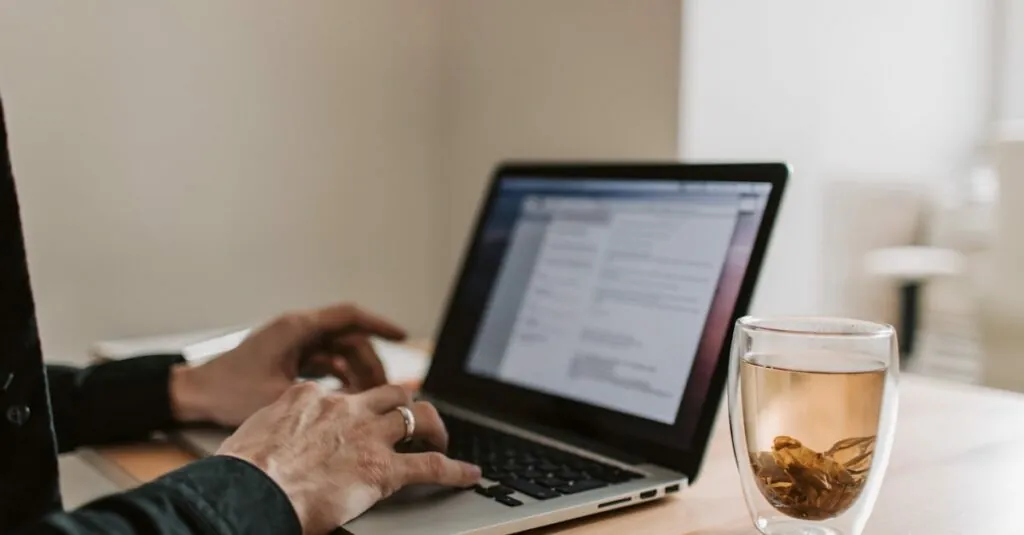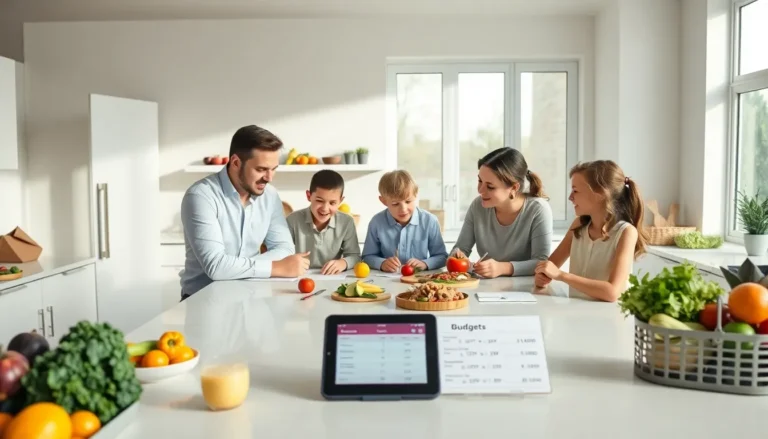Table of Contents
ToggleImagine this: you’re lounging on the couch, snacks in hand, when suddenly you realize your iPhone’s in the other room. Panic sets in. How can you check that important message or find that hilarious meme you just saw? Fear not! Remote access to your iPhone is here to save the day.
Understanding Remote Access
Remote access to an iPhone allows users to control their devices from a distance through various applications and services. Features like iCloud, Apple’s built-in services, facilitate access without needing physical possession of the phone. Users can manage files, check messages, and even locate their device using Apple’s tools.
Applications such as TeamViewer or AnyDesk provide additional options for remote management. These third-party apps require installation on both the iPhone and the accessing device, creating a link for control or supervision. Setting up these applications usually involves creating an account and granting specific permissions.
Establishing remote access typically requires a stable internet connection on both devices. An uninterrupted connection ensures smooth operation and effective control. Notifications from the apps may alert the user about access attempts or changes made, enhancing security.
Security protocols play a critical role in maintaining privacy during remote sessions. Users should enable two-factor authentication on their Apple ID and utilize strong, unique passwords for their accounts. Familiarity with app permissions also adds an additional layer of safety during remote operations.
Awareness of the potential risks associated with remote access is essential. Users should understand the implications of permitting access, especially when using third-party applications. Remote access can significantly enhance convenience when managing iPhones, but vigilance is key to protecting sensitive information.
Methods To Remote Access An iPhone
Remote access to an iPhone can occur through built-in features or third-party applications. Both options provide effective ways to manage a device from a distance.
Using Built-In Features
Apple’s iCloud offers several built-in tools for remote access. Users can utilize Find My iPhone to locate their device, even if it’s lost or stolen. This feature allows tracking and enables device locking or erasing remotely for security. Additionally, iCloud Drive supports file access and management from any web browser on a computer. By signing into the iCloud website, users can view documents, photos, and more. Enabling these features requires sufficient configuration within the device settings, assuring they’re always up to date and accessible.
Third-Party Applications
Numerous third-party applications facilitate remote access to an iPhone. TeamViewer and AnyDesk are two popular choices that provide extensive remote control capabilities. Users can manage their screens, check messages, and handle files as if they were physically holding the device. Installing these apps involves creating an account and granting necessary permissions, ensuring reliable connections. Strong security measures accompany these applications, making it vital to choose those that prioritize user safety and data integrity.
Setting Up Remote Access
Setting up remote access on an iPhone involves meeting specific requirements and following detailed steps. Users can connect to their devices efficiently through this process.
Prerequisites
A stable internet connection ensures successful remote access. Users must also create accounts for iCloud or third-party applications like TeamViewer or AnyDesk. Enabling features like Find My iPhone requires compliance with Apple’s instructions in device settings. Accounts must use strong passwords alongside two-factor authentication for added security. Awareness of each app’s privacy policies strengthens user protection during remote access.
Step-by-Step Guide
First, navigate to the Settings app. From there, tap on your Apple ID and select iCloud. Turn on Find My iPhone to enable location services. Next, download the required third-party app from the App Store if using alternatives like TeamViewer. After installation, create an account and follow prompts to grant necessary permissions. Use the app on another device to enter the account details, establishing a remote session. Regularly check app settings to maintain security and functionality.
Security Considerations
Remote access to an iPhone brings numerous benefits, but security must remain a priority. Users should be aware of potential vulnerabilities to safeguard their personal information.
Data Privacy
Data privacy plays a crucial role when accessing an iPhone remotely. Strong passwords can help prevent unauthorized access to accounts. Enabling two-factor authentication adds another layer of security, requiring a secondary verification step. Users need to limit the information shared with third-party applications, avoiding excessive permissions. Awareness of data privacy policies is essential as some apps might collect more information than necessary. Regularly reviewing app permissions helps maintain control over personal data.
Protecting Your Device
Protecting an iPhone from remote access threats requires diligence. Users must keep their operating system up to date, as software updates often include security patches. Installing reputable applications minimizes risks associated with malware and scams. Adjusting settings to disable automatic connections can prevent unauthorized access attempts. Furthermore, logging out of remote access accounts when not in use enhances security. Users should remain vigilant about phishing attempts, ensuring that any communication regarding account access originates from trusted sources.
Remote access to an iPhone offers users unparalleled convenience and flexibility. By utilizing tools like iCloud and trusted third-party applications, individuals can manage their devices from virtually anywhere. However, it’s essential to prioritize security by implementing strong passwords and enabling two-factor authentication.
Regularly reviewing app permissions and staying vigilant against potential threats will help protect sensitive information. With the right setup and precautions, remote access can significantly enhance the way users interact with their iPhones, making everyday tasks more manageable and efficient. Embracing these technologies empowers users to stay connected and in control, no matter the distance.





